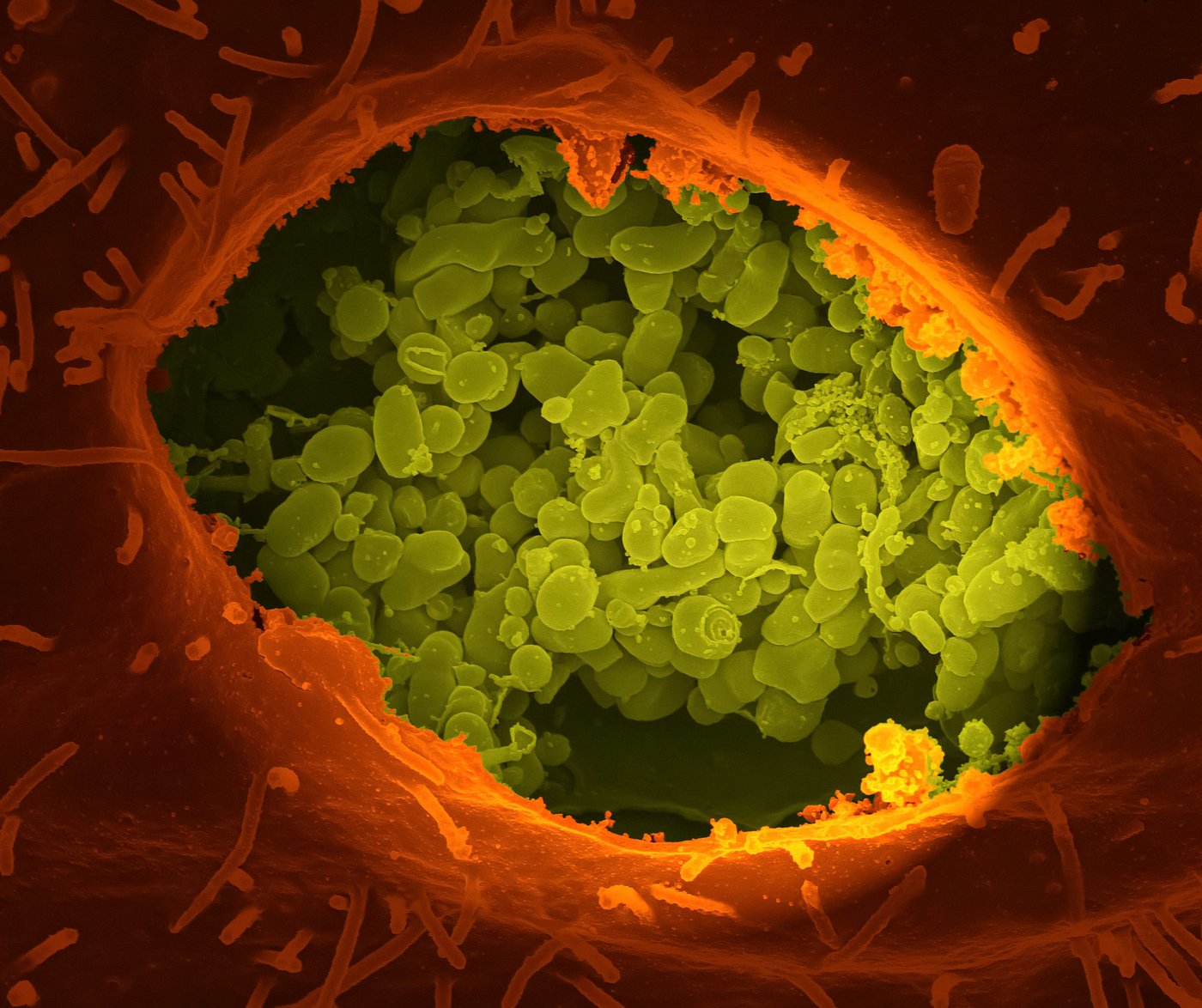FAQ on Q Fever
What is Q fever?
Q fever (from English query fever) is a disease caused by an infection with the bacterium Coxiella burnetii. It is a zoonosis, i.e. a disease that can be transmitted from animals to humans.
Where does it occur?
Coxiella burnetii bacteria are found worldwide, with the exception of New Zealand and Antarctica. Q fever is rare, with between 50 and 400 cases reported annually in Germany over the last 20 years. The disease primarily affects sheep, goats and cattle, but more rarely other domestic mammals including cats and dogs can be infected. Most outbreaks are registered in rural areas, e.g. in sheep farms.
How is Coxiella burnetii transmitted?
Infection typically occurs through inhalation of a spore-like form of the bacterium, e.g. in contaminated dust, hay or on wool. The pathogen can survive there for years and remain infectious. Transmission is also possible through contact with milk, urine, faeces, vaginal secretions or sperm of infected animals. In rare cases, the disease is transmitted by ticks. Human-to-human transmission only occurs in exceptional cases.
What are the symptoms?
Symptoms in humans
The incubation period is 9 to 40 days. About half of the infections are asymptomatic or mild. However, flu-like symptoms can also occur, such as sudden onset of fever, chills, fatigue, headache, aching limbs, cough, chest pain, and rarely gastrointestinal symptoms. The fever, which is usually mild, lasts for about seven to fourteen days.
Occasionally, there are severe acute courses with pneumonia or liver inflammation. Rarely, the disease can become chronic, for example as Q fever endocarditis (inflammation of the heart valves). Pregnant women and people with pre-existing conditions (e.g. immunosuppressed persons and people with artificial heart valves or vascular prostheses) are particularly at risk.
Symptoms in animals
In cattle and sheep, Q fever usually runs its course without clear symptoms. If it does, the infection is manifested by a reluctance to eat, miscarriages, malformations, udder inflammation and infertility.

What do I do if I suspect Q fever?
As the symptoms are non-specific in the vast majority of cases, it is difficult to clinically suspect Q fever without a spatial and temporal connection to an existing outbreak. If you or your relatives think you may have Q fever, please contact your family doctor's office or the responsible public health department in your region. Q fever can be diagnosed with the help of a blood sample (antibody test). If Q fever is detected, the disease can be treated specifically.
What treatment options are there?
Acute Q fever can be treated with antibiotics such as doxycycline, co-trimoxazole or quinolones. In chronic forms, the therapy is given for at least a year, sometimes combined with the malaria drug hydroxychloroquine, which is also effective.
How can I protect myself?
In Germany, no vaccination against the pathogen has been approved. Avoid herds with young animals between spring and autumn. Do not touch any animals. Wash your hands.
Contact
- Prof. Dr Dennis Tappe
- Research Group Leader
- phone: +49 40 285380-499
- fax: +49 40 285380-252
- email: tappe@bnitm.de
- Dr Johannes Jochum
- phone: +49 40 285380-219
- email: bni-ambulanz@uke.de
- Dr Anna Hein
- Public Relations
- phone: +49 40 285380-269
- email: presse@bnitm.de
- Julia Rauner
- Public Relations
- phone: +49 40 285380-264
- email: presse@bnitm.de
- The Laboratory diagnostics|Consultation for physicians
- Advice on the diagnostic procedure
- phone: +49 40 285380-211
- fax: +49 40 285380-252
- email: labordiagnostik@bnitm.de







